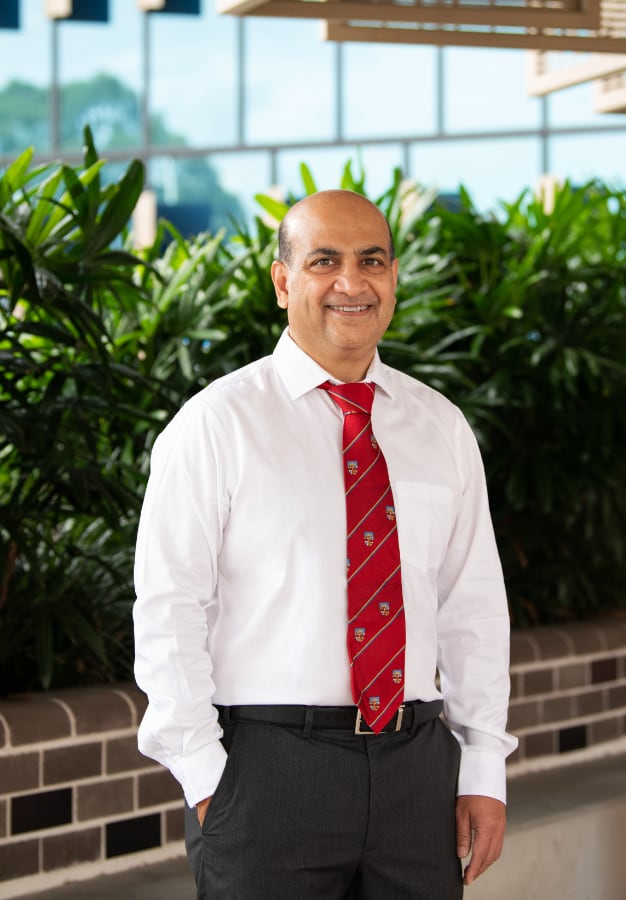Facial ageing is a natural process influenced by several factors, including genetics, sun exposure, lifestyle choices, and the passage of time.
As we age, the skin loses elasticity, the underlying tissues weaken, and the effects of gravity become more pronounced. These changes often result in sagging skin, deep wrinkles, and a loss of youthful contours in the face and neck.
Dr Atul Ingle specialises in modern facelift techniques, and has limited his procedures to the Deep Plane facelift and the MACS facelift procedures, as he considered these to offer the best outcomes.
The deep plane facelift is an advanced surgical technique designed to provide a more natural and long-lasting rejuvenation of the face.
Unlike traditional facelifts, which historically were done by tightening the skin alone (leading to a ‘tight’ and unnatural looking appearance), the deep plane facelift focuses on lifting and repositioning the deeper layers of facial muscles and tissues, specifically the superficial musculoaponeurotic system (SMAS) and the deeper facial ligaments.
This approach ensures a more comprehensive and natural-looking result.
The primary factors contributing to the need for a deep plane facelift include:
The deep plane facelift involves making incisions along the hairline, around the ears, and sometimes under the chin. The surgeon carefully lifts the skin and underlying tissues, repositioning the deeper layers to their more youthful positions.
This technique allows for a more extensive and natural repositioning of facial structures, providing a rejuvenated appearance without the overly tight ‘stretched’ look sometimes associated with traditional, less technically demanding facelift techniques.
Advantages
Disadvantages
The primary factors contributing to neck ageing include:
Necklift surgery involves making incisions behind the ears and sometimes under the chin. The surgeon removes excess fat, tightens the platysma muscle, and redrapes the skin for a smoother, firmer appearance.
This approach can significantly improve the contours of the neck and jawline.
Advantages
Disadvantages
The deep plane facelift is an advanced surgical technique designed to provide a more natural and long-lasting rejuvenation of the face.
Unlike traditional facelifts, which historically were done by tightening the skin alone (leading to a ‘tight’ and unnatural looking appearance), the deep plane facelift focuses on lifting and repositioning the deeper layers of facial muscles and tissues, specifically the superficial musculoaponeurotic system (SMAS) and the deeper facial ligaments.
This approach ensures a more comprehensive and natural-looking result.
The primary factors contributing to the need for a deep plane facelift include:
The deep plane facelift involves making incisions along the hairline, around the ears, and sometimes under the chin. The surgeon carefully lifts the skin and underlying tissues, repositioning the deeper layers to their more youthful positions.
This technique allows for a more extensive and natural repositioning of facial structures, providing a rejuvenated appearance without the overly tight ‘stretched’ look sometimes associated with traditional, less technically demanding facelift techniques.
Advantages
Disadvantages
Patients are usually advised to:
These surgeries are typically performed under general anaesthesia. The duration of the surgery can vary depending on the chosen technique and the complexity of the procedure.
Recovery times vary depending on the type of surgery and the extent of the procedure. Most patients can return to normal activities within a few weeks, although strenuous activities and heavy lifting should be avoided for several weeks.
Swelling and bruising typically subside within a few weeks, and the final results become more apparent as healing progresses.
The results of facelift and necklift surgeries are generally long-lasting, providing significant improvements in facial and neck appearance. Most patients find that these procedures help them look younger and feel more confident.
Facelift and necklift surgeries can have significant psychological benefits, enhancing self-esteem and body image. Many patients feel more comfortable and confident in their appearance, which can positively impact their social and professional interactions.
Deep Plane facelift, MACS facelift, and necklift surgery are safe and effective procedures for individuals seeking to improve their facial and neck contours by addressing signs of ageing. In Australia, experienced plastic surgeons perform these procedures with great success, helping patients achieve a more youthful and refreshed appearance.
Whether addressing genetic predispositions, lifestyle factors, or age-related changes, facelift and necklift surgeries can provide transformative results.
For more information or to schedule a consultation, please contact our clinic. Dr Atul Ingle has significant experience performing facelift and necklift surgery and is dedicated to helping you achieve your aesthetic goals and enhancing your overall quality of life.
He has 20+ years of experience in plastic and reconstructive surgery and holds two Master of Surgery Degrees. He is the Head of the Plastic and Reconstructive Surgery Department at Townsville University Hospital.
If you have a question about a condition or treatment, or would like to book an appointment, please contact us and one of our friendly staff members will happily assist you.
